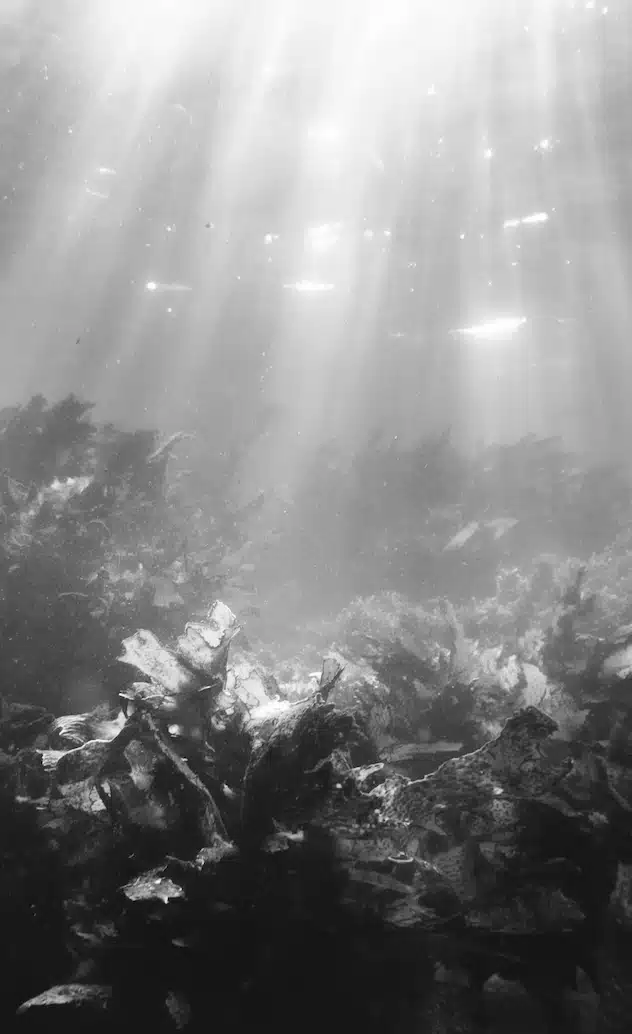REPORT
From Ocean Plague To Opportunity:
The Race To Turn Sargassum Into Value
From Ocean Plague To Opportunity:
The Race To Turn Sargassum Into Value
This explainer unpacks the science, economics, and significance of turning invasive sargassum seaweed into carbon-negative sustainable aviation fuel.
The Sargassum Crisis
Every year, millions of tonnes of sargassum seaweed drift from West Africa to the Caribbean, smothering beaches, releasing methane, and disrupting local economies.
For most, it’s a coastal nightmare. For Dr. Mar Fernández-Méndez, it’s a new kind of fuel story.
As the co-founder of MacroCarbon, Fernández-Méndez is leading a bold effort to turn this floating menace into carbon-negative sustainable aviation fuel (SAF).
MacroCarbon turns the invasive sargassum into hydrogen-rich SAF, capturing carbon as it grows and cleaning the ocean in the process. It’s a rare “two-for-one” climate innovation — tackling both marine and atmospheric challenges.
To learn more about MacroCarbon, check out our interview with Dr. Fernández-Méndez here.
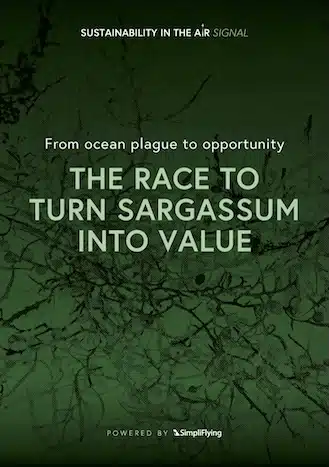
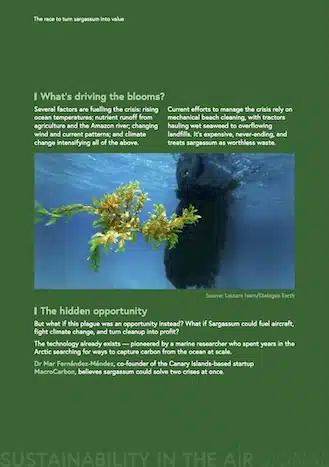
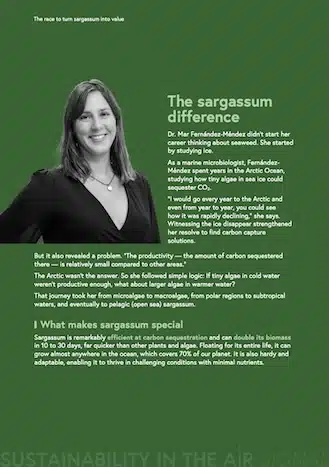
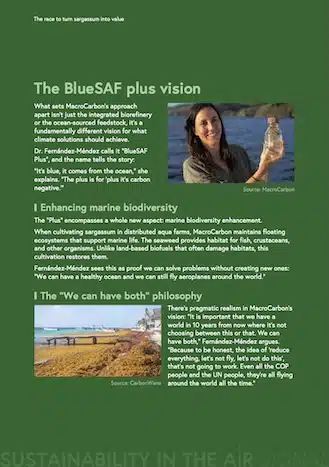

Key takeaways
The sargassum crisis
How a drifting seaweed bloom became a $300M-a-year environmental emergency for the Caribbean.
MacroCarbon’s innovative process
Through MacroCarbon’s process, sargassum can produce four revenue streams — bio-stimulants, biochar, carbon black, and SAF
How seaweed is becoming a promising feedstock
Carbon pricing and EU mandates are making ocean-based SAF through feedstocks like sargassum increasingly competitive.
